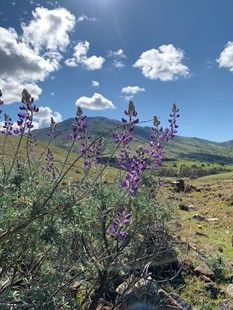Monumental Questions - What is 30x30?

In May of 2021, the Biden administration introduced the America the Beautiful Initiative. The Initiative defined a vision for the conservation organizations across the United States to work together to restore, conserve and protect lands and water across the nation. The purpose of the Initiative was to establish a nationwide effort to restore and conserve 30% of the Nation’s land and waters by the year 2030. The Initiative is providing support to federal and locally led conservation efforts on Tribal, public and private land and water.
California, blazing trails
Closer to home; in October 2020, more than six months before the Biden Administration’s America the Beautiful Initiative, Governor Newsom issued an executive order that established a parallel state goal of conserving 30% of California’s land and coastal water by the year 2030. This Executive Order became commonly known as 30x30. The goal of 30x30 is to expedite preservation in California through the collaborative efforts of conservation partners to meet three objectives: conserve and restore biodiversity, expand access to nature, and mitigate and build resilience to climate change. Our own 30x30 goals not only contribute to conservation right here in California but they also support our national 2030 conservation goals.
How its going
Just a short four years after 30x30 was signed into law, California is quickly gaining ground (pun intended) on that ambitious goal. To date, California has added a million and a half acres (approximately 2,350 square miles) of land to our overall conservation total. A recent report from Governor Newsom and the California Natural Resources Agency shows that California currently has over 25% of its land conserved but still holds just 16.2% of its coastal waters preserved. The good news is that there are still more than five years to accomplish the 30x30 goal.
In just a smidge over a year between April 2022 and May 2023, California added 631,000 acres to our total. And since then, we’ve added an additional 861,000 acres! This big chunk of acreage is from areas that were conserved through land acquisition, new conservation easements, and California’s first ever ancestral land return which supplied $100 million dollars in grants for the return of nearly 39,000 acres to Indigenous communities. Also included in the newly protected areas is the expansion of two established national monuments. The San Gabriel Mountains National Monument and our personal favorite, the Berryessa Snow Mountain National Monument are among the largest advancements bringing about 120,000 acres of federally protected land to the conservation total. Using his powers under the Antiquity Act, President Biden added 13,696 acres to the Berryessa Snow Mountain National Monument in May of 2024 with the addition of Molok Luyuk (Condor Ridge).
California’s progress has also paved the way for projects at the national level with other states such as Nevada, Hawaii and New York, among others, working toward their own 30x30 goals. According to the report, California still has a way to go, needing just under five million acres of land and 500,000 acres of conserved coastal waters to meet our 30x30 goal. A prospective Chumash National Marine Sanctuary is proposed off the Central Coast of California that would add acreage toward our coastal waters goal. But stay tuned, we are definitely on the right track (or trail as we here at Tuleyome like to say) toward meeting our goal and blazing even more new trails!
If you’d like to learn more about California’s 30x30 goals and progress, please visit www.californianature.ca.gov/.
-Kristie Ehrhardt (kehrhardt@tuleyome.org)
Tuleyome Land Conservation Program Manager
RECENT ARTICLES






